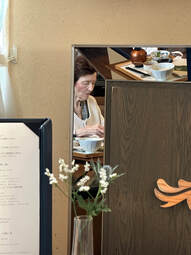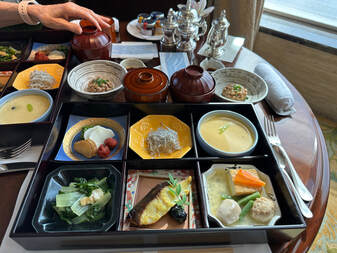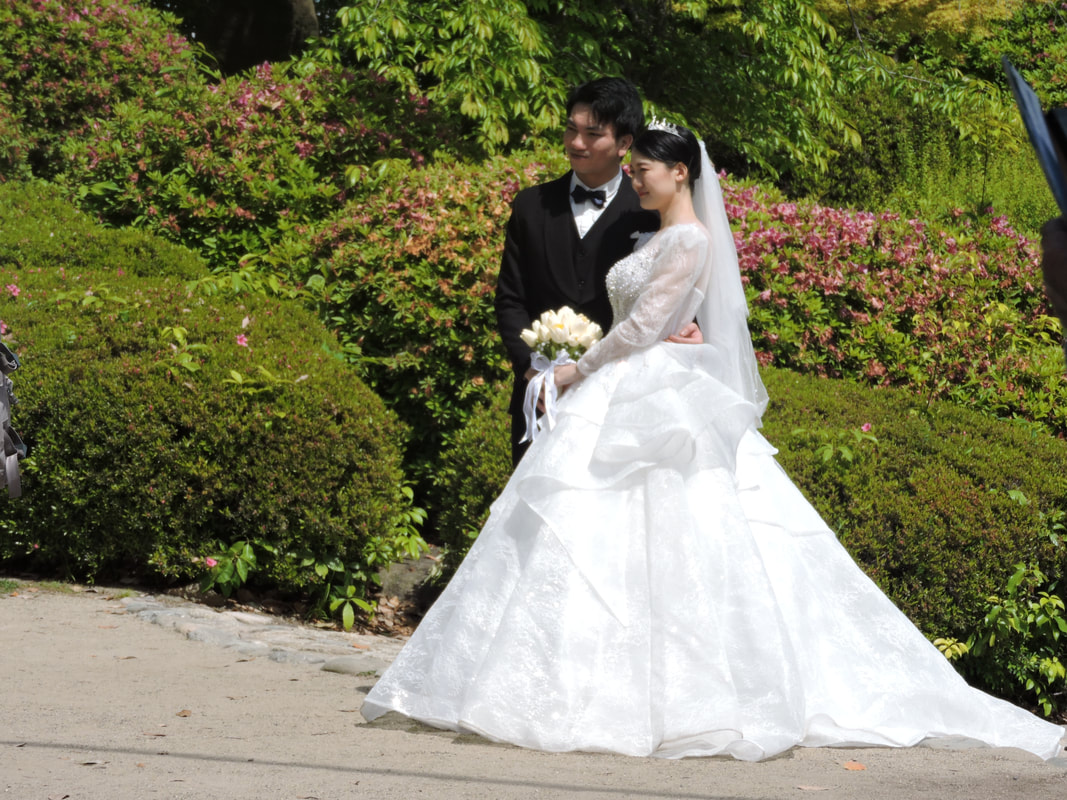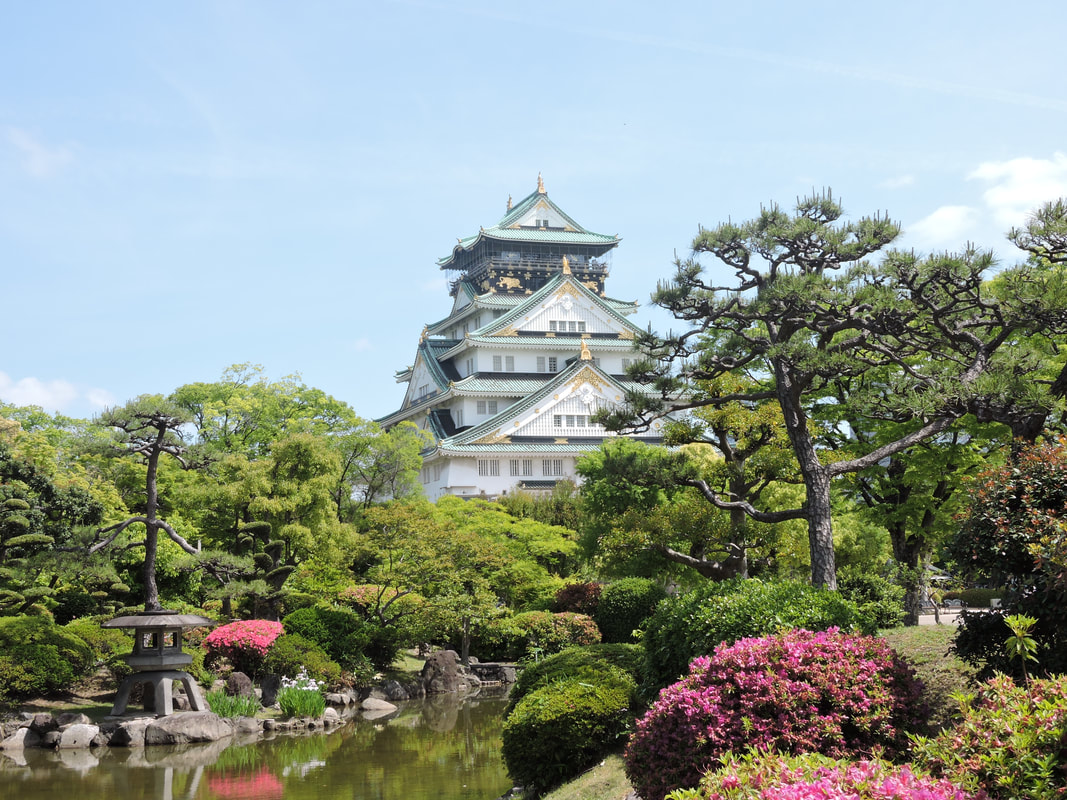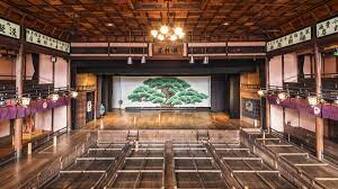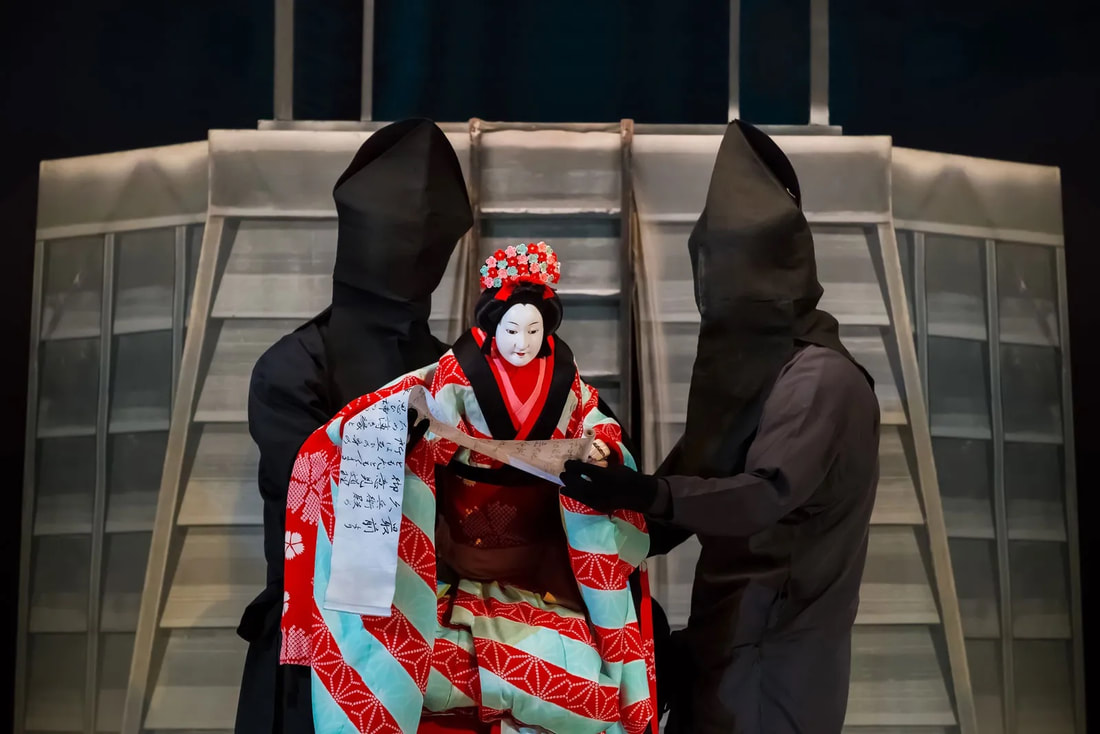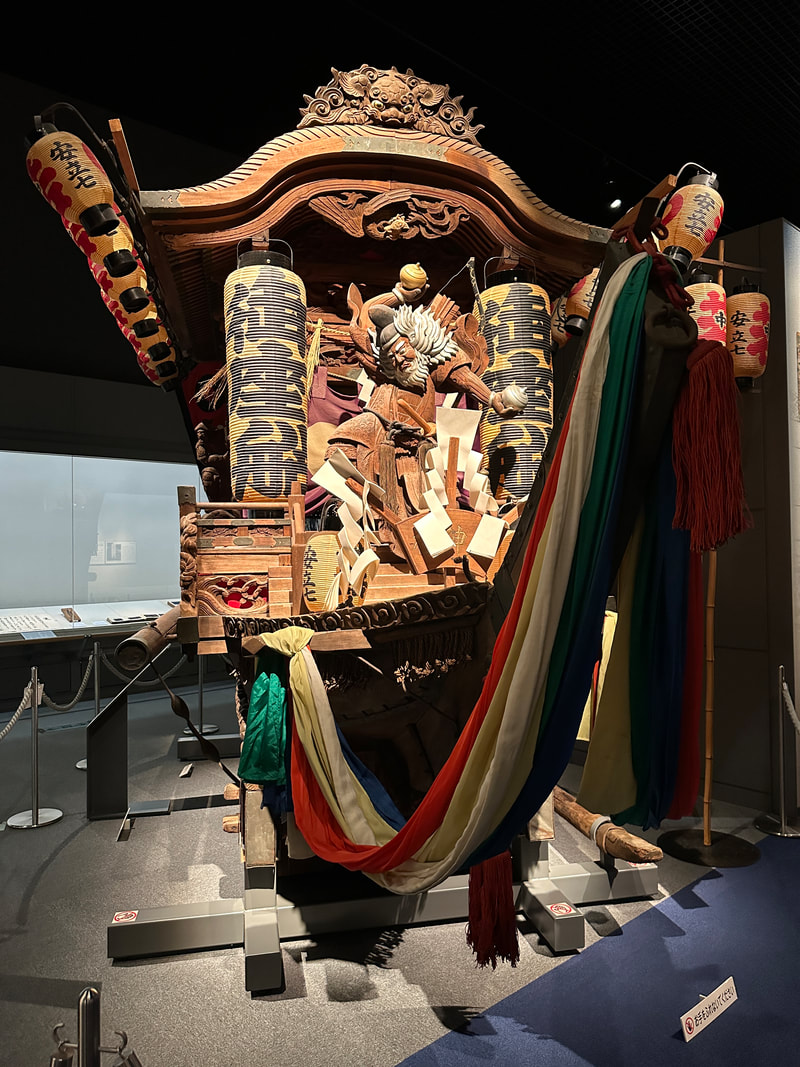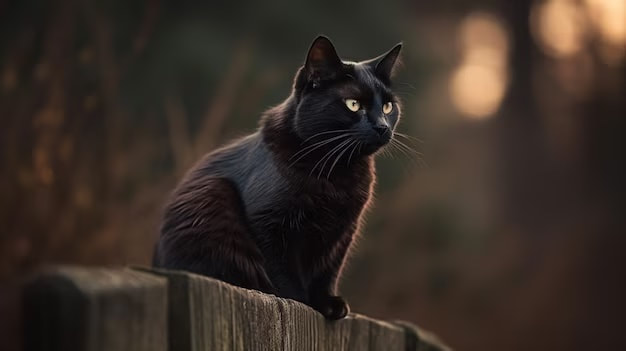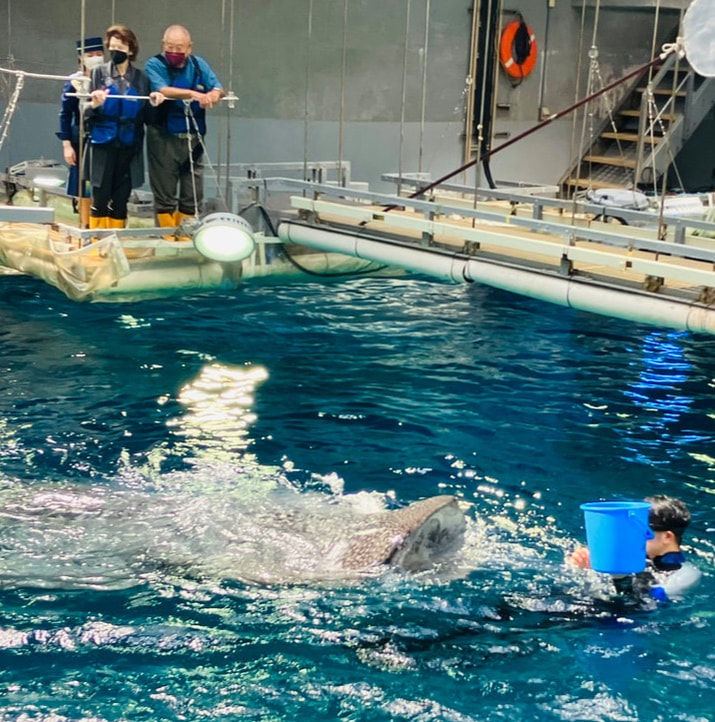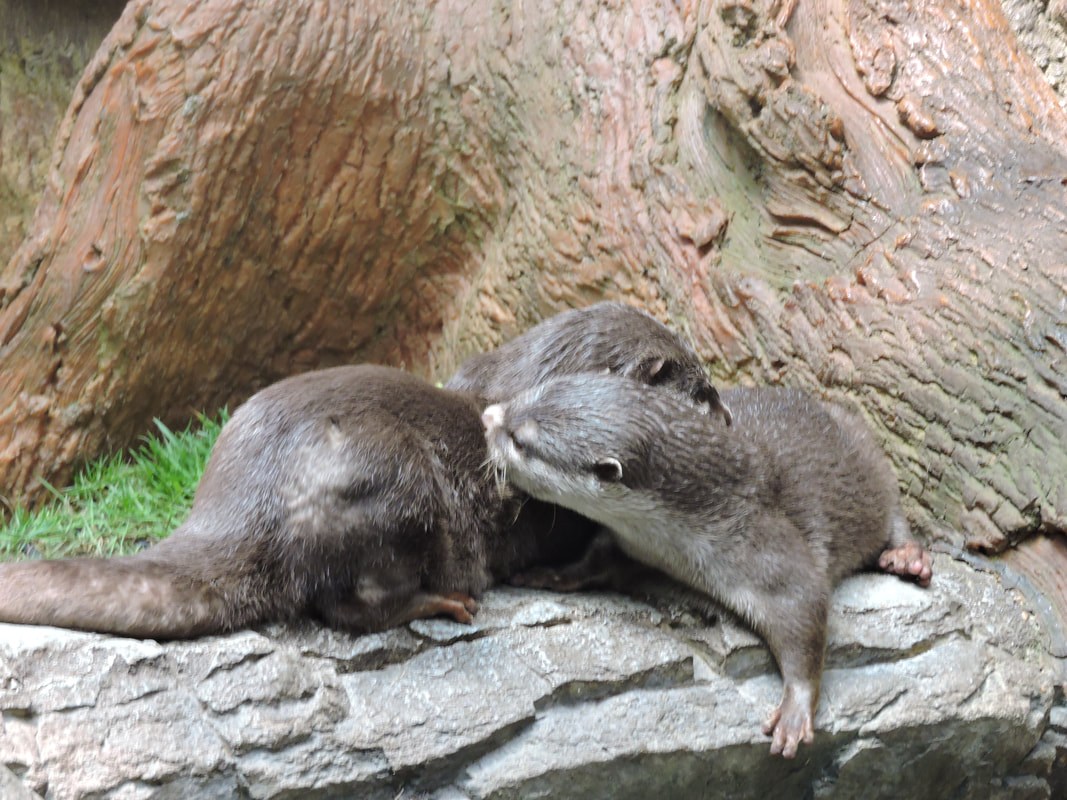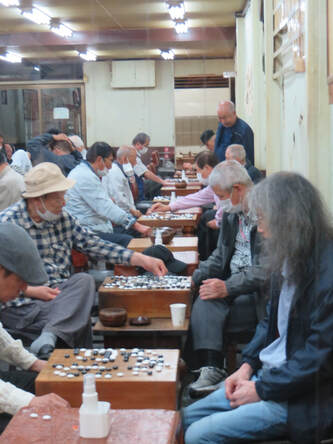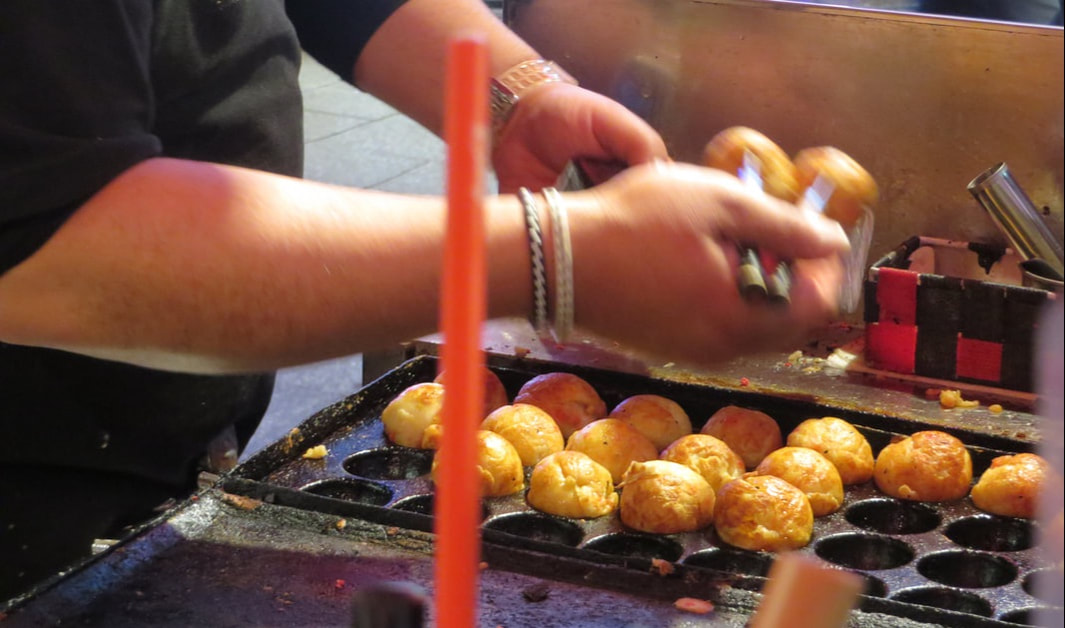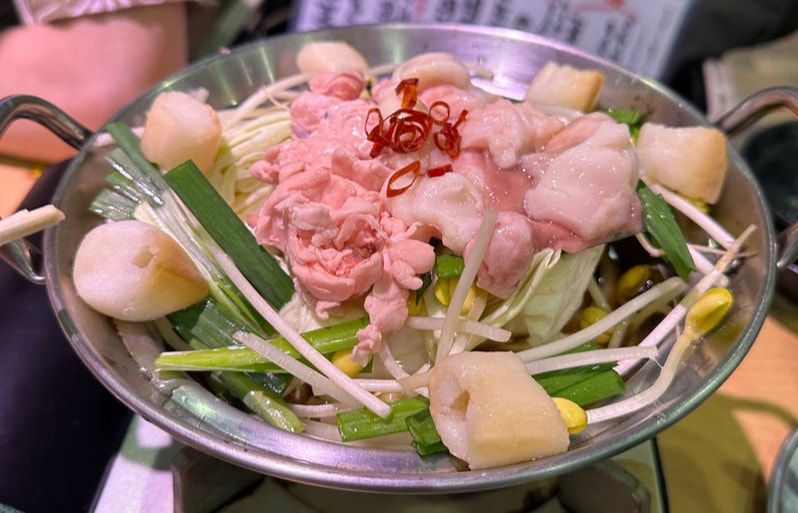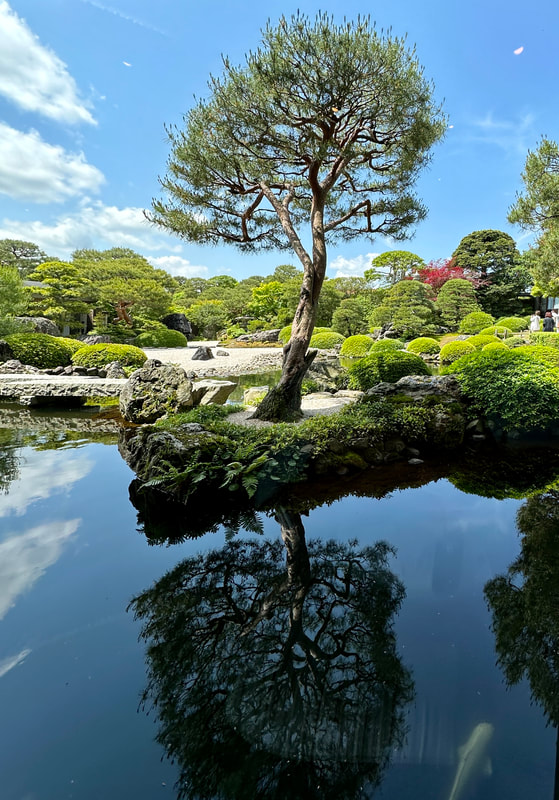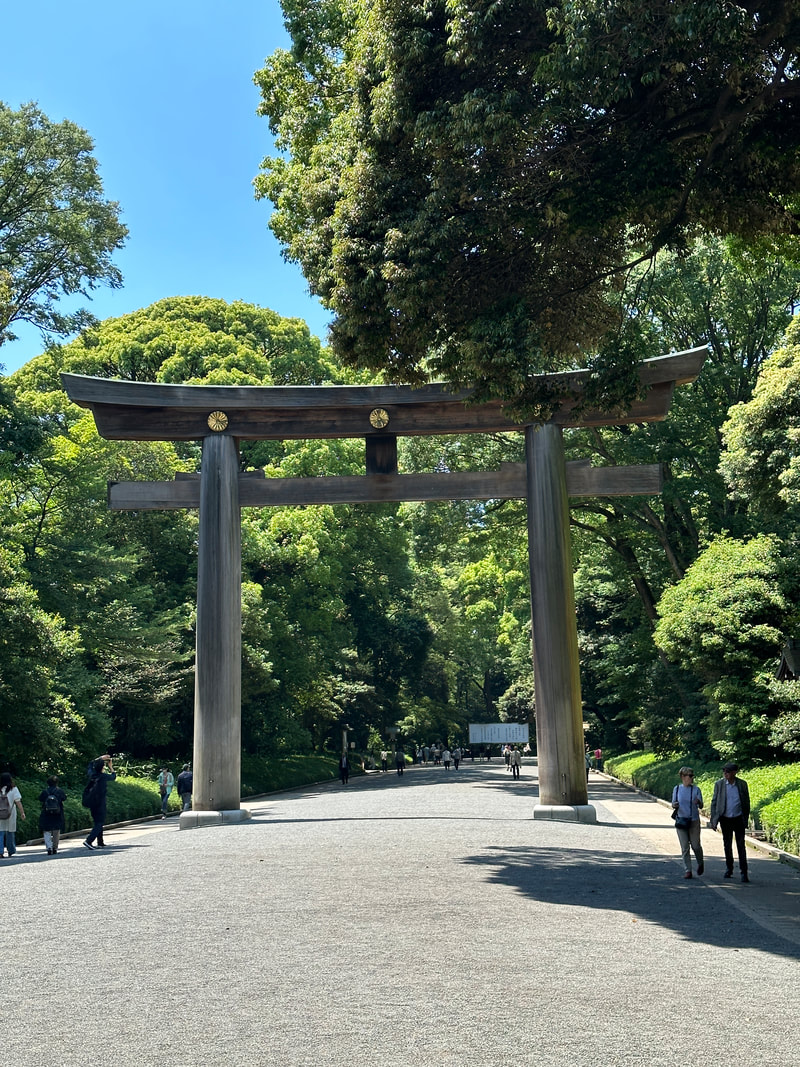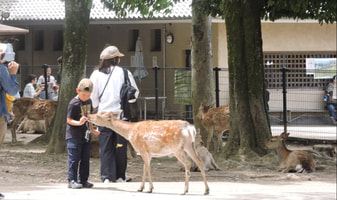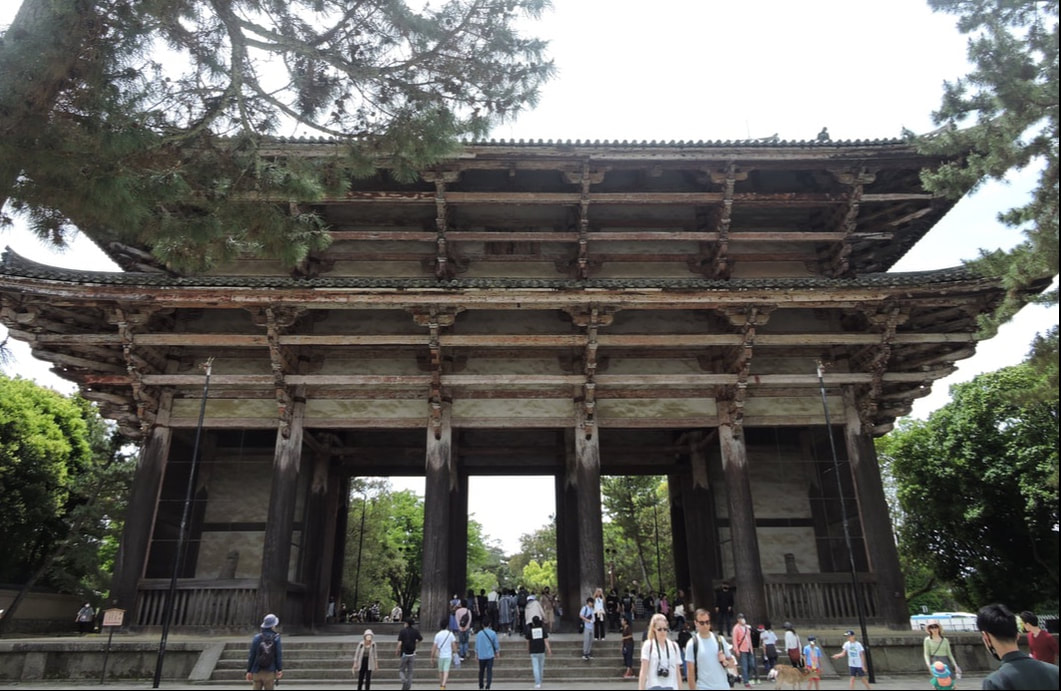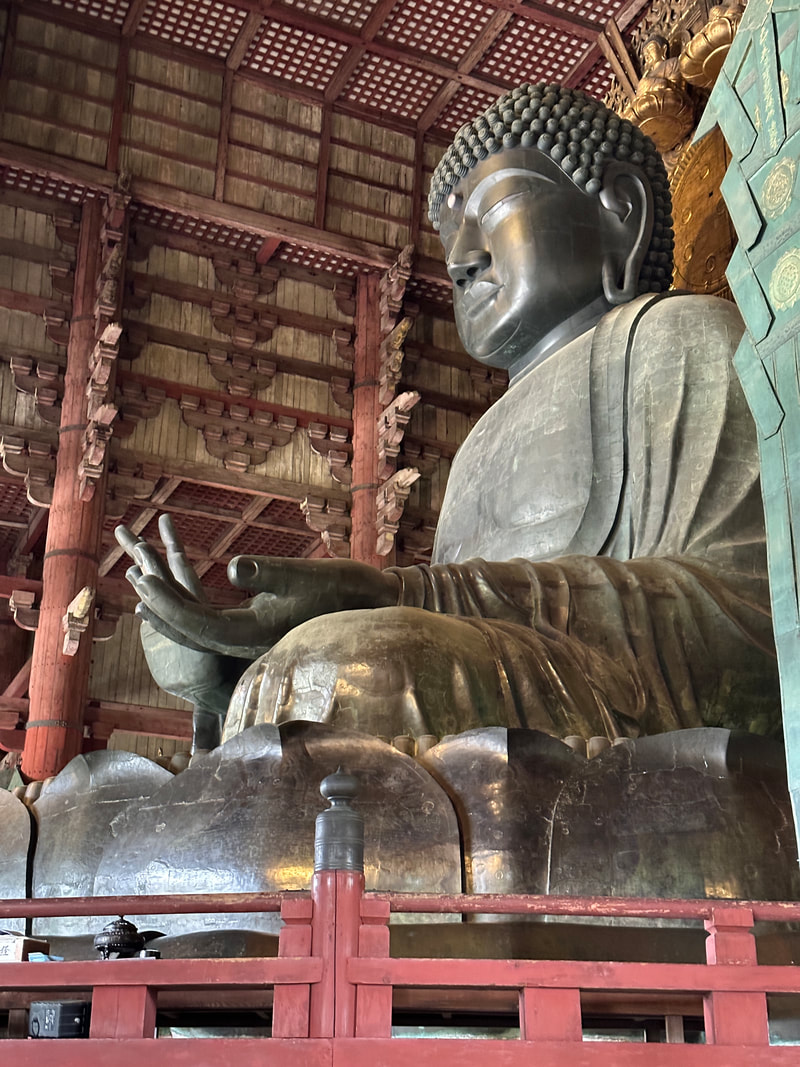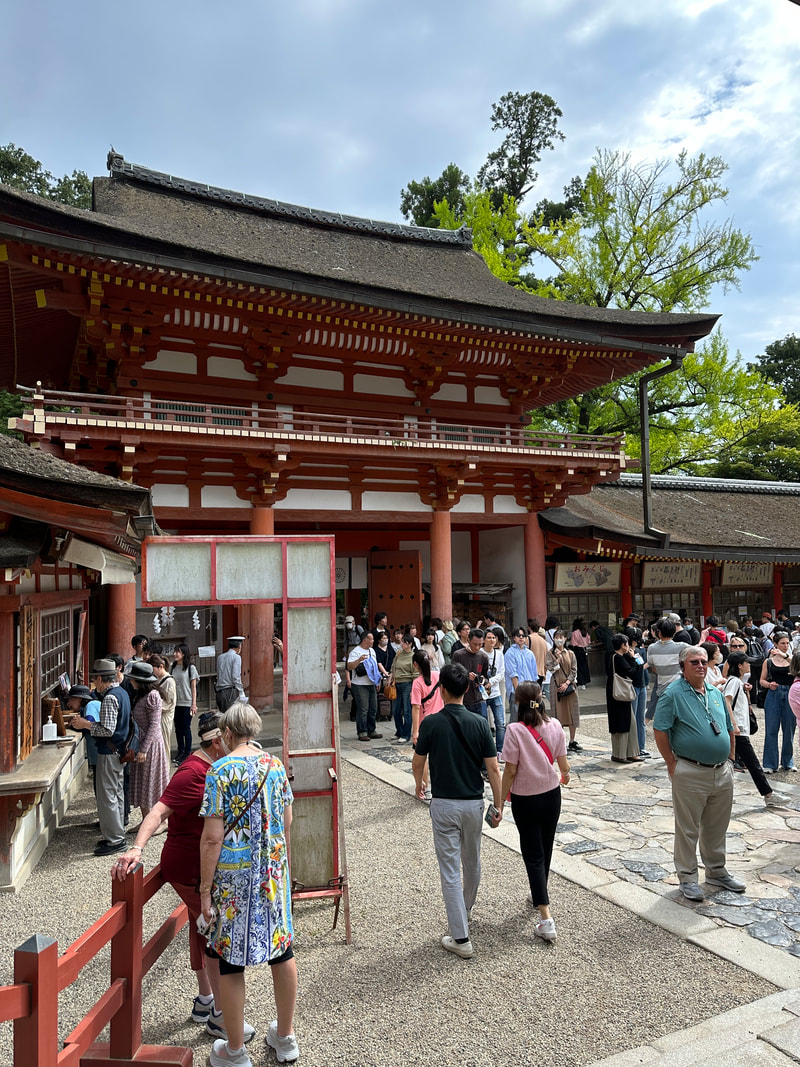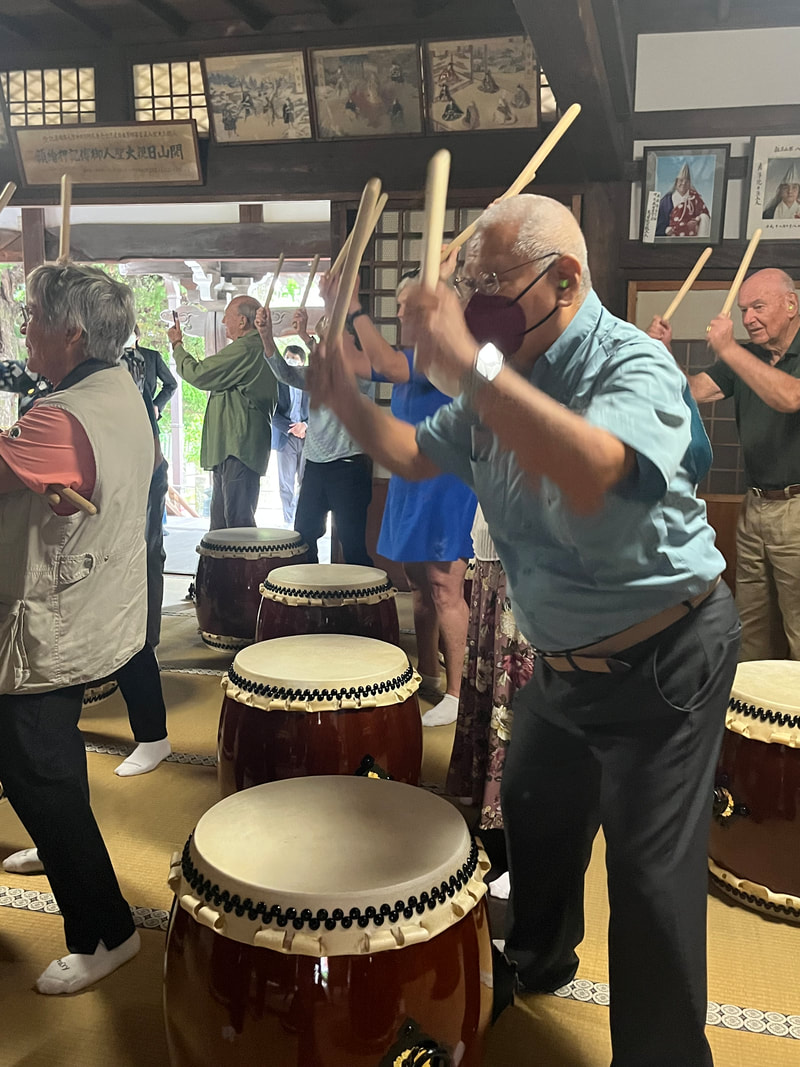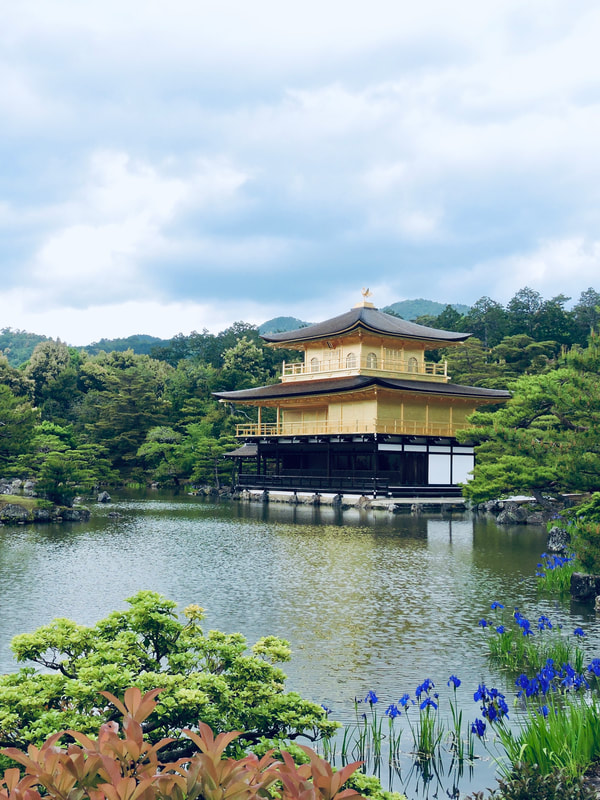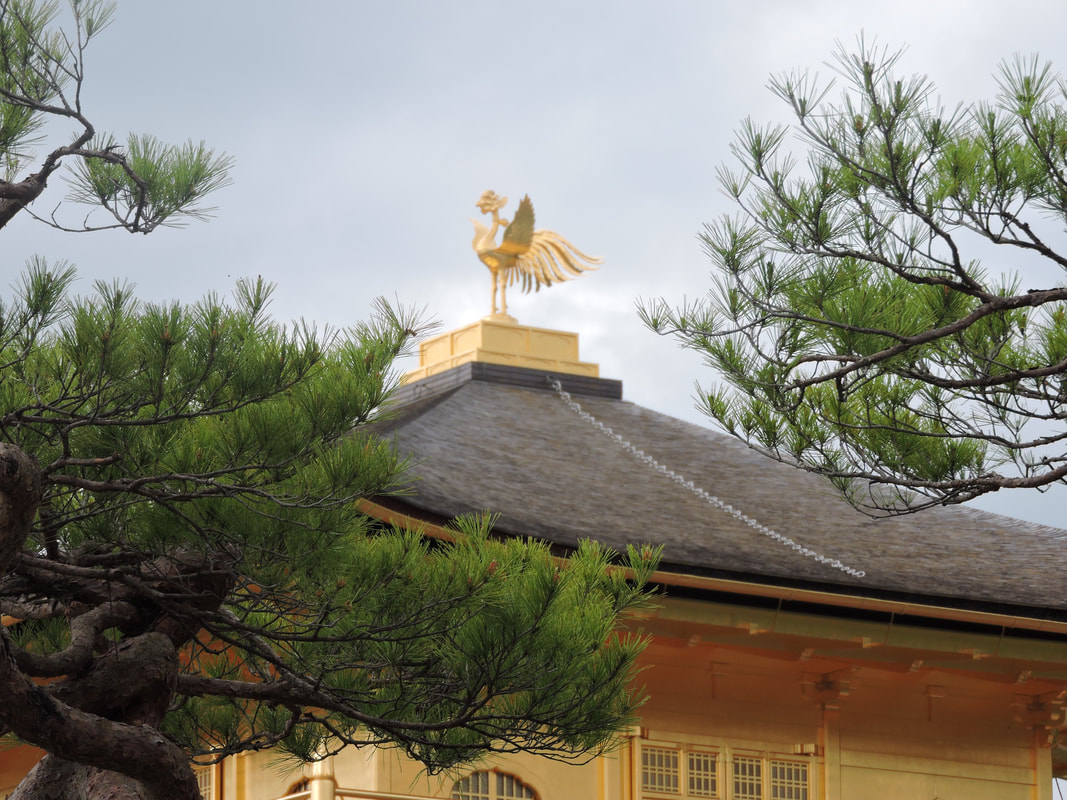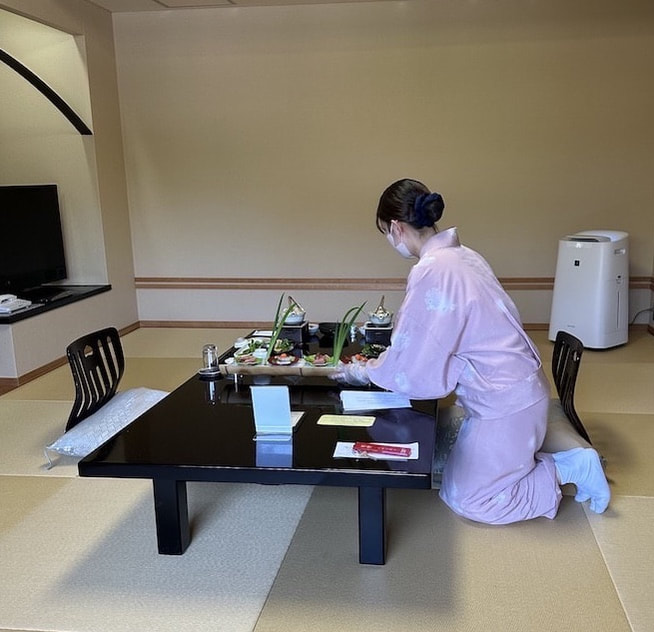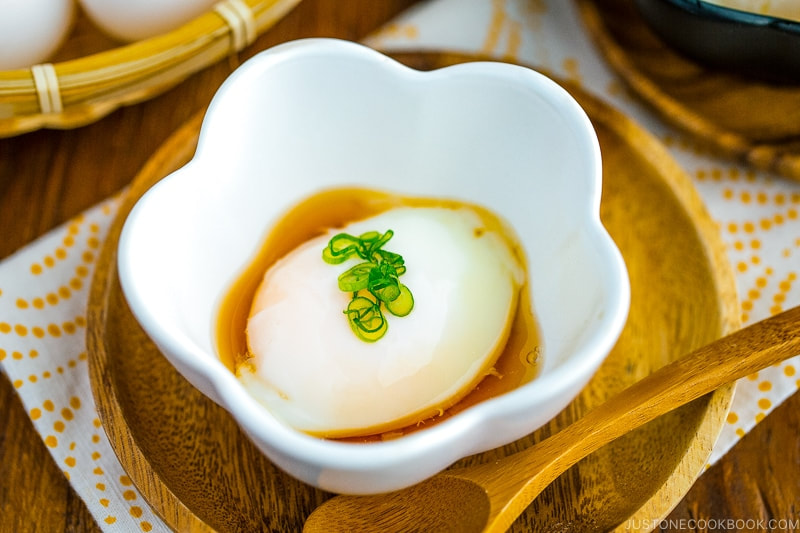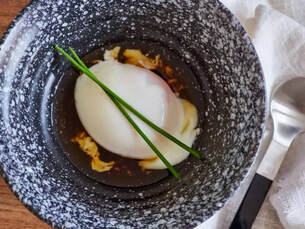Our recent adventures in Japan began in Osaka and the area known as the Kansai. This region of southern Honshu, Japan’s largest and most heavily populated island, comprises the historic and cultural center of the country. The Kansai includes the cities of Osaka, Kobe, Nara and Kyoto. Anyone who is thinking of visiting Japan for the first time should make sure to explore this fascinating area, where trendy modern street food and fun mingle with ancient Buddhist temples and Shinto shrines, castles and traditional arts, crafts and cuisine, still alive in the Kansai.
Our home in the Kansai was the lovely St. Regis Osaka Hotel, where we began every eventful day with a magnificent Japanese breakfast, served on a wooden tray with individual items in small portions artfully arranged in local ceramic dishes of various colors and shapes. With some variety from day to day, the Japanese breakfast at the St. Regis included a traditional savory egg custard called chawan mushi, sashimi (ultra-fresh raw fish with wasabi, and soy sauce,) baked cod, Japanese pickles, rolled egg omelet, rice and nori (dried seaweed.) A sumptuous breakfast buffet, featuring fresh fruit and juices, Western style egg and meat dishes, a full English breakfast and French pastries was also available for all guests. Additional Japanese breakfast items from the buffet could be added to the traditional breakfast tray. Among these items were gobo (matchstick slices of seasoned burdock root,) natto (fermented soybeans,) and onsen eggs, (soft boiled eggs with soy sauce traditionally cooked in the boiling waters of Japanese hot springs spas.)
This magnificent medieval castle was built in 1583 by the famous Samurai war lord, Hideyoshi Toyotomi. The castle has been destroyed and rebuilt many times throughout history. The first time we visited Osaka Castle years ago, I noticed a discreet little sign in English noting that the current castle is entirely reconstructed due to a fire in1945. I took this as a polite way of saying that Osaka Castle was bombed by the Americans shortly before the bombings of Hiroshima and Nagasaki that ended the Second World War. The moat and some of the massive stone wall fortifications of the original castle are still intact, and this architectural gem with its gilded roof sits on a hill in the center of Osaka, surrounded by a lovely park and garden, including flowering peach, plum and cherry trees and azaleas, which were in bloom when we visited. The beautiful pond and waterfall are a favorite spot for wedding photos for newlyweds.
Wayne and I were delighted by Osaka’s quirky mix of ancient and modern, blended in a vibrant and complex cultural web. There are yakuza, Japanese gangsters who don’t carry guns, in Osaka, as well as elegant geisha, young women who receive years of rigorous training in music, dance and dignified comportment as companions for men at social functions. We were fortunate to observe a lovely geisha dance performance while we were in Osaka. We also enjoyed a delightful tour of The Osaka Aquarium, the largest aquarium in the world. The concierge at the St. Regis Hotel arranged for us to have a private guided tour behind the scenes, at an additional cost. It was well worth it! Two young women escorted us through the inner workings of the giant tank containing two huge whale sharks as well as hammerhead sharks, manta rays and hundreds of other Pacific Ocean species. We got to watch right from the top edge of the tank as two young divers, each with a bucket of krill and chopped shrimp, dived in and hand fed the two massive sharks. Both of the whale sharks were accidentally caught by Japanese fishermen and will be returned to the ocean when they get bigger, although they are both already huge. Their backs had a beautiful spotted pattern like a kimono. It was an unforgettable privilege to see these glorious creatures so close.
Kushi-yaki is the perfect snack for young people strolling around in the evening looking for fun. Fun in Osaka might include drinking a few beers and shooting arrows at an archery range, (what could possibly go wrong?) or shooting air rifles at boxes of cookies, which are the prizes for anyone who can knock them over. People of all ages in Osaka also enjoy playing vintage game machines from the 1970s. We also saw elderly gentlemen gambling on games of go, the Japanese version of chess, using guerilla warfare strategies rather than the European-style front line military techniques on which chess is based.Regardless of the type of trendy or traditional entertainment that goes on in Osaka, food is necessary. Osaka is the go-to city for sushi, ramen noodles, sashimi, and another Osaka original, okonomi-yaki, a fried egg and cabbage omelet that can also include anything else that happens to be in your refrigerator. Osaka is also proud to be the city where the rotating sushi bar (some designed as little train cars on a revolving track, each car carrying one or two pieces of sushi,) was invented.
While Osaka is fun city, the other and smaller cities in the Kansai, especially Nara and Kyoto, are better known for their ancient and beautiful Buddhist temples and Shinto shrines. These two cities are the guardians of Japan’s glorious past, filled with art, literature and elegance.
The Shinto religion in Japan pre-dates historic records. It is not based on theology or a set of moral teachings. Instead, Shintoism is a world view that emphasizes the sacredness of the passing seasons and all aspects of the natural world. In Shinto, trees are sacred, as are mountains, rivers and all plants and animals. Spirits, known as kami live in every element in nature, even in rocks and volcanoes. Shinto shrines, which can be identified by tall wooden entrance gates called Torii, are everywhere throughout Japan, and because of Shinto’s historic reverence for life and nature, Japan remains a place that values gardens, pure air and water, and children are taught to respect the environment. The Japanese emphasis on cleanliness grows out of this tradition of respect for the world around us.Buddhism was introduced to Japan from Korea and China around the year 552 of the Current Era. This philosophy originated in the Sixth Century BC through the teachings of the historic Buddha, Prince Siddhartha, who was born in Nepal, and whose message of loving kindness, spiritual discipline and control of the ego quickly spread throughout India, China, Korea and Southeast Asia. Today there are 300 million Buddhists in the world.
Wayne said that he remembered coming to see the Great Buddha with his parents as a child and how much he loved feeding the deer. Today the deer were in molting mode, shifting from their winter coats to their summer coats, with tufts of fur coming off their backs, and the children seemed to be having as much fun feeding them as Wayne did, all those years ago.
There is a beautiful Shinto shrine, the Kasura Taisha, in the same park as the Todai-ji Temple. The shrine was established in 768 and remains a lovely place where a deep reverence for nature is everywhere apparent. When we visited, the stone lanterns in the garden area were covered with moss, and wisteria petals were falling onto the moss. A one-thousand-yea-old cedar tree stands near the entrance to the shrine, and an eight-hundred-year-old wisteria was in bloom, though the petals were falling. There were lots of deer at the Kasura Taisha also, and there was a snack shop where we bought the shrine’s signature snack—wisteria flavored soft-serve ice cream, a lovely lavender color and a pleasant subtle flavor.
The next day, a beautiful spring day in Kyoto, we visited the Kinkaku-ji Temple. This masterpiece of architectural elegance was constructed in three stories in the traditional Japanese palace style, and in 1397 it became the retirement villa of the Shogun, Ashikaga Yoshimitsu. Upon his death in 1408, this mountain palace became a Zen Buddhist Temple, the top two floors of which are entirely covered in gold leaf. It is also a UNESCO World heritage site.
The gracious city of Kyoto is filled with many other lovely Buddhist Temples, including the glorious Kiyomizu, as well as gardens and traditional wooden houses. A quiet serenity pervades this clean and ancient city. The culinary art of the Kaiseki meal, a leisurely form of dining that includes a sequence of small individual dishes served artistically on masterfully produced ceramic ware, is still alive in Kyoto. So is the art of the Geisha. Kyoto is one of my favorite cities in the world. If I could only visit one city in Japan, it would be Kyoto.As we say goodbye for now to the Kansai, the old and new in fun-loving Osaka, historic Nara and gracious Kyoto, I am happy to share with you the recipe for a simple treat served at traditional Japanese hot-springs spas, the Onsen Egg. As I mentioned, we enjoyed Onsen Eggs at the breakfast buffets of both the Shangri-La Hotel in Tokyo and the St. Regis in Osaka, and Wayne makes them for us at home in his sous vide cooking pot. Next month we will conclude our adventures in Japan with a cruise southern islands and waterways. For now, itadakimasu! Enjoy your food!
4 large eggs
For the sauce:
- 2 tablespoons mirin
- 2 teaspoons sugar
- ½ cup soy sauce
- ¾ cup dashi (Japanese fish broth available in Asian markets in packets)
Thinly sliced green onions for garnish
Special equipment:
sous vide cooking pot or medium sized cooking pot, small cooking pot, cooking thermometer, 4 small attractive bowls for serving
Makes: 4 servings
Make the sauce:
- In a small cooking pot, bring the mirin to a simmer. Add the sugar and stir to dissolve. Add the soy sauce and bring the mixture to a simmer, not a hard boil. Set the mixture aside to cool.
- Prepare ¾ cup of hot dashi following the instructions on the package. (Simply add a packet of dried dashi to the designated amount of hot water.)
- Add ¼ cup of the soy sauce mixture to the ¾ cup of dashi. Reserve the remaining soy sauce mixture and refrigerate both as you prepare the eggs.
Prepare the Eggs.
- Fill a sous vide pot or a regular cooking pot ¾ full of water. Heat the water to 167 degrees F. Maintain this temperature throughout the cooking time, using a cooking thermometer and adjusting the heat as necessary to maintain the correct cooking temperature.
- Add 4 eggs in their shells and cook for 13 minutes. Remove immediately and chill in an ice bath.
- To serve, crack as much of the shell as necessary to release each egg into a small decorative serving bowl. Use a paper towel to remove any egg white that has remained too runny or uncooked.
- Pour about 2 tablespoons of the dashi sauce over each egg and serve immediately.
